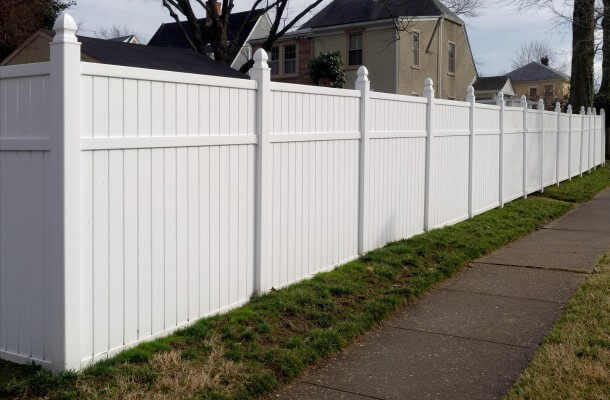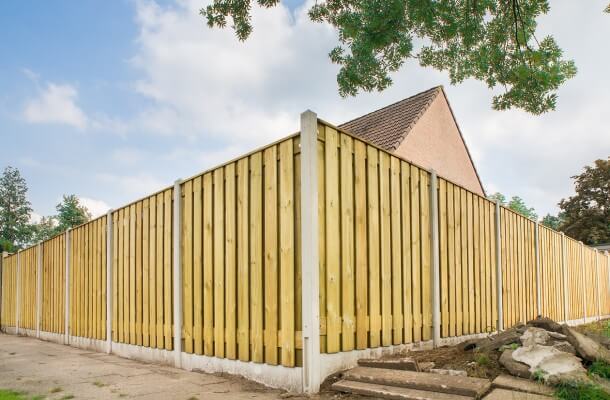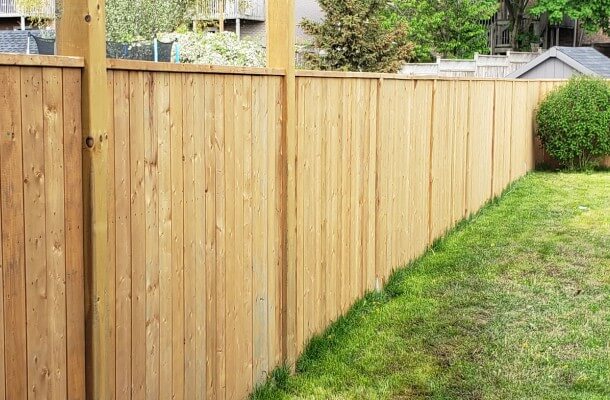Installing a new fence around your property is a big investment that can significantly impact the look and feel of your outdoor space.
Two of the most popular fencing materials today are vinyl and wood. But which one is better for your home? There are pros and cons to both materials that are important to consider before making a decision.
Vinyl Fencing Benefits
Vinyl has grown tremendously in popularity over the past couple of decades as a fencing material. Here are some of the main benefits that vinyl fencing provides:
Low Maintenance
One of the biggest advantages of vinyl fencing is that it requires very little ongoing maintenance compared to wood fencing. Vinyl doesn’t need to be stained, sealed, or painted to maintain its appearance and prevent deterioration. This saves you time and money down the road.
Durability
Vinyl is extremely durable and stands up well to weather, insects, rot, and warping. The color is embedded throughout the material so it resists fading. And vinyl won’t crack, peel, or splinter like wood can over time. Quality vinyl fences can last 20-30 years or more.
Customizable Style
Vinyl fencing is available in a wide range of colors, textures, and designs. You can mimic classic wood styles or choose modern, unique looks. Vinyl can also be molded to have intricate details and accents. This allows you to customize the look you want for your yard.
Affordability
While vinyl fencing does come with a higher upfront installation cost, it usually pays for itself over time when factoring in lack of maintenance. And as manufacturing processes improve, vinyl continues to become more cost-effective.
Wood Fencing Benefits
Wood fencing has a classic, timeless appeal and natural charm that vinyl can’t quite duplicate. Here are some benefits of using wood for your fence:
Aesthetic Appeal
For many homeowners, wood fencing simply looks more attractive than vinyl. The natural grain and texture provides character and warmth that vinyl lacks. Wood can also be left to weather gracefully to a gray patina over time.
Easy Repairs
One advantage with wood is that fixing any damage or broken boards is usually simple. A damaged vinyl panel often needs to be replaced completely. But wood boards can be easily swapped out as needed.
Good Privacy
Wood is more opaque than vinyl fencing, providing better privacy between neighbors. The closed grain doesn’t allow light or visibility to pass through the same way vinyl’s more open materials do.
Eco-Friendly Choice
Wood is a renewable, biodegradable resource. Sourcing lumber from sustainably-harvested forests is an environmentally-responsible choice. Most vinyl is made from non-renewable petroleum resources.
Range of Styles
Wood fencing comes in a wide array of traditional and ornamental designs. From simple pickets to elegant lattice patterns, wood can achieve looks not possible with vinyl. Composite wood-plastic blends also expand options.
Key Comparison Factors
When deciding whether to install wood or vinyl fencing at your home, here are some key factors to consider:
Climate
Vinyl holds up better than wood in wet, humid climates where moisture can cause wood to crack, warp, and rot faster. Arid climates allow wood to last longer before deteriorating. Local weather patterns should inform your choice.
HOA Rules
Many homeowners associations prohibit or restrict certain fencing materials. For example, a HOA may only allow wood fencing in keeping with neighborhood aesthetics. Check your HOA covenants before selecting a material.
UV Exposure
Vinyl fencing resists sun damage better than wood. Constant UV exposure can fade and discolor wood faster, requiring more frequent staining. Areas that get intense sunlight favor vinyl’s superior durability.
Color Options
Vinyl comes in far more color choices. But wood allows for custom staining if you want a unique hue. Weigh personal color preferences against available options.
Privacy Level
If privacy from neighbors or the street is a priority, wood is the better choice as it blocks more sights and noise. The openness of vinyl fencing allows some visibility through the material.
Budget
Vinyl costs more upfront but becomes cost-competitive long-term thanks to lack of maintenance. Wood is cheaper initially but requires more frequent upkeep. Weigh budgets versus cost projections.
Fencing Company Recommendations
Reputable local fencing companies like Fencing Lee’s Summit MO have the expertise to assess your home and lifestyle needs in order to recommend the best fencing solutions. Their insights are invaluable.
Making the Best Choice for Your Situation
There are great reasons to select either vinyl or wood fencing for your particular home. Think about which benefits align most closely with your priorities, needs, aesthetic tastes, and budget. Vinyl makes sense for low maintenance and durability. Wood fits if natural appeal and eco-friendliness are top concerns.
Be sure to check local regulations and HOA requirements as well. And consulting with knowledgeable fencing companies like Fencing Lee’s Summit MO can offer guidance specific to your property.
Weigh all the variables together to make the fence material decision that enhances your home and outdoor living space the most. With the right choice made, you’ll be able to enjoy your beautiful new fence for decades to come.



